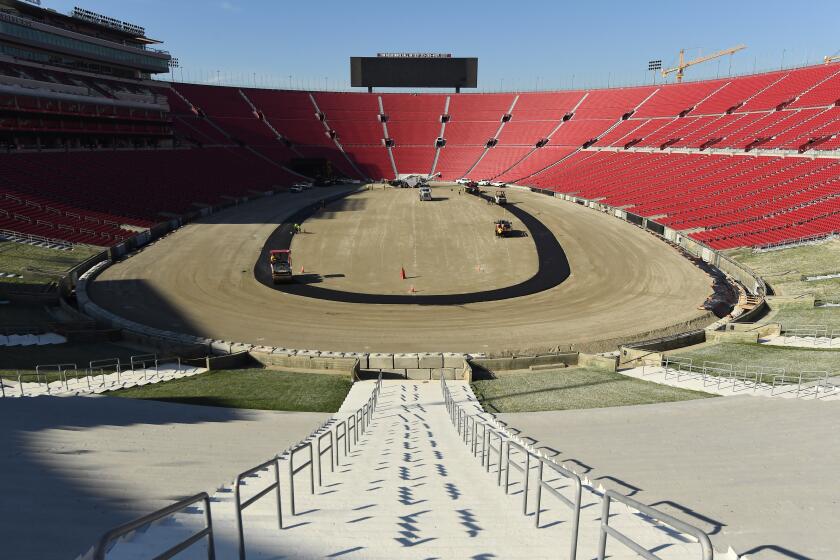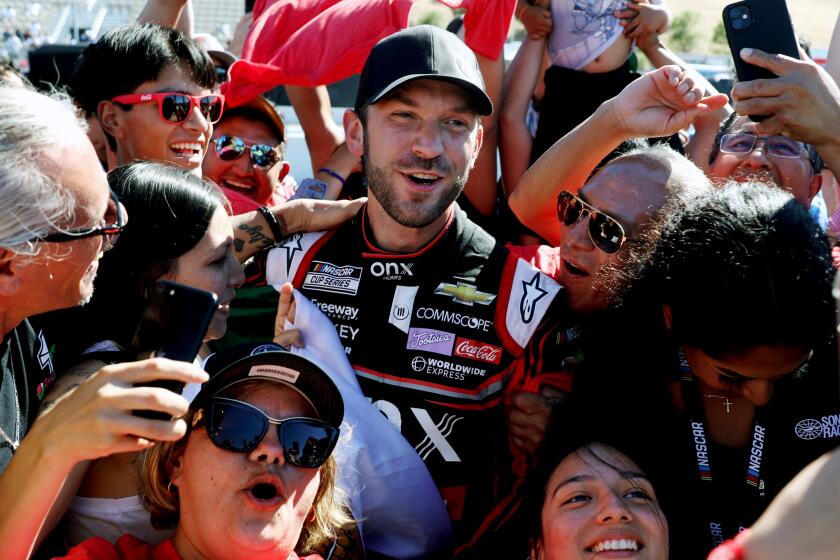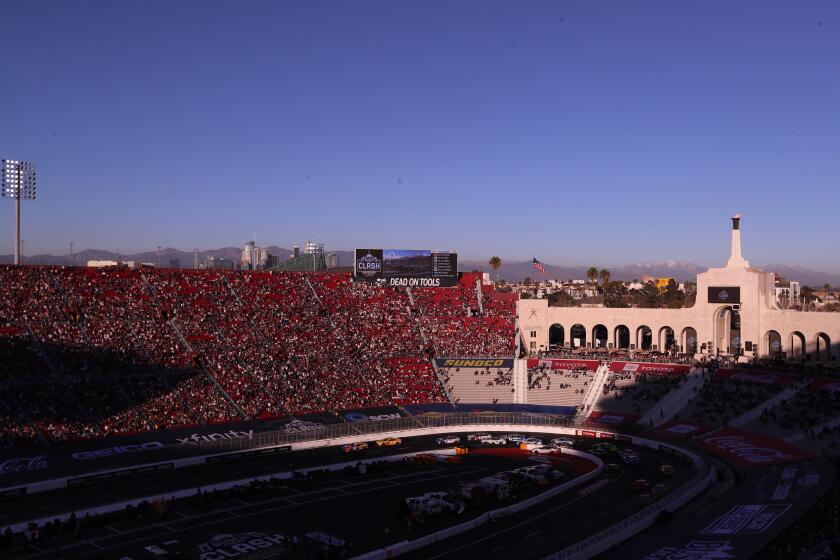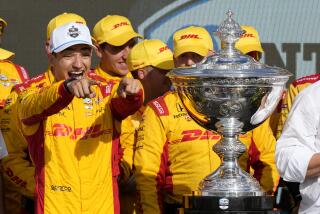NASCAR’s Drive for Diversity is transforming pit crews with college and pro athletes
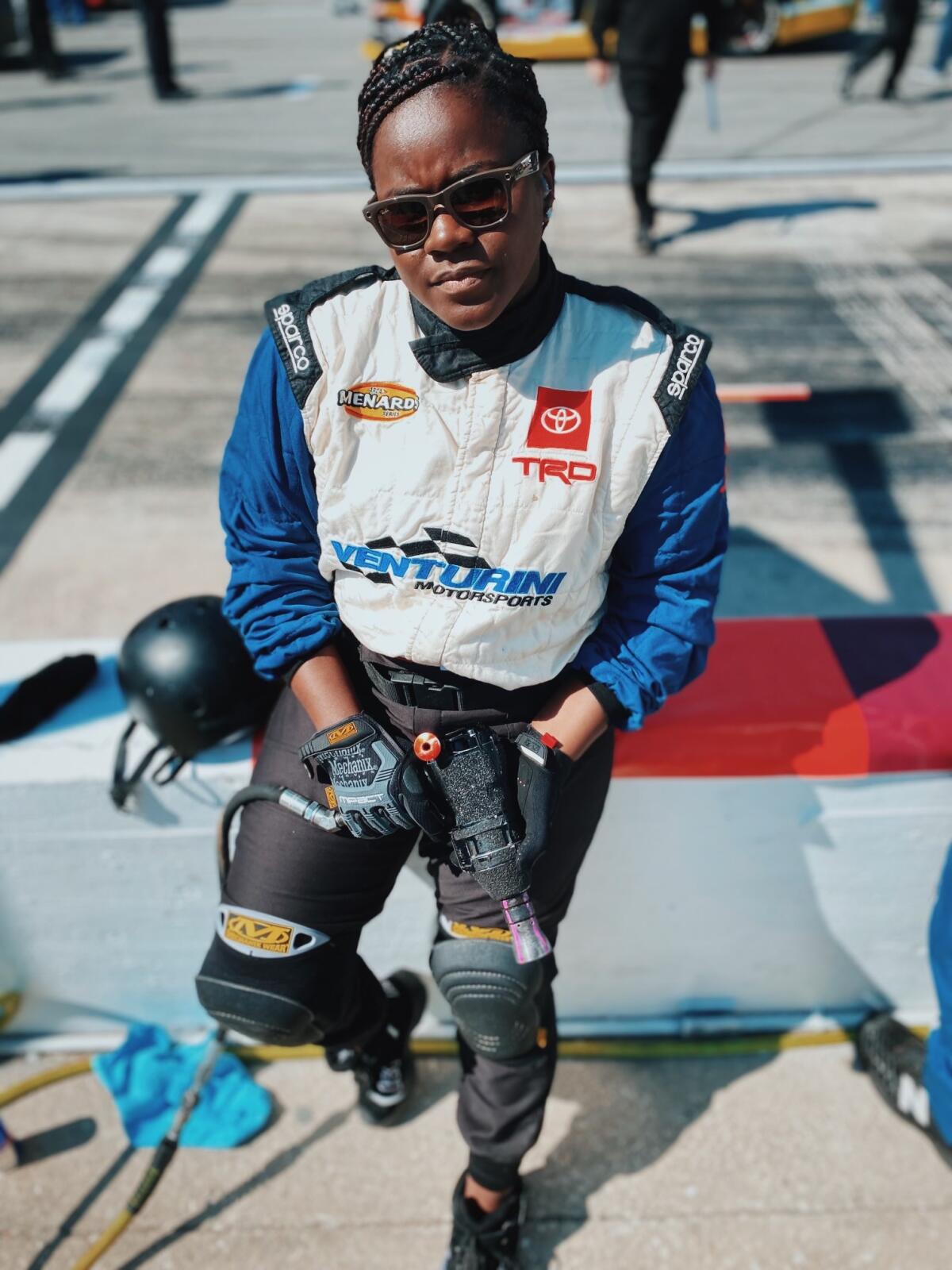
When Tyriq McCord joined NASCAR as a pit crew member a little more than three years ago, his knowledge of what made a car go fast stopped and started with the gas pedal.
“I didn’t even know how to change the tire on my car,” he said.
But he could bench-press 225 pounds and run 40 yards in 4.5 seconds and those were the kinds of skills Phil Horton was looking for.
A former athletic trainer in college football and with the NBA’s Milwaukee Bucks, as the pit crew coach for stock-car racing’s Drive for Diversity development program Horton has recruited more than 100 former college and professional athletes, from lacrosse players to linebackers, to work as tire changers, tire carriers, jackmen — and women — and gasmen for teams in all three of NASCAR’s top three nationwide series. And while that has undoubtedly made NASCAR more diverse, it’s also made pit crews better and faster, which can mean millions of dollars in a sport where the average margin of victory last season was 1.011 seconds.
NASCAR teams have done what once seemed impossible, building a track inside L.A.’s Coliseum. This is how they did it and how drivers feel about it.
“The speed of the game in our world has picked up dramatically so we look for athletes because it’s so specialized,” said Chris Burkey, director of human performance and the pit crew coach for Joe Gibbs Racing who was a Division I college football coach and NFL scout before coming to racing in 2009. “When I got into NASCAR, a lot of guys that had been in the sport a long time said this will never work. Now basically 98% of pit road are former athletes.”
NASCAR opens its 75th season Sunday with the second Clash at the Coliseum, a 150-lap dash around a quarter-mile oval set up on the floor of the historic stadium in Exposition Park. Qualifying for the 27-car field will be held Saturday afternoon. The tightness of the Coliseum track and the short length of the 37.5-mile exhibition event leaves no room for pit crews or pit stops, but both elements will be decisive when the NASCAR regular season opens at Daytona in two weeks.
For that you can thank Horton, who everyone in NASCAR refers to as Coach Phil.
Horton got his start in racing 25 years ago as a personal trainer for former driver Ernie Irvan. However, the longer he hung around the track, the more his background in elite team sports convinced him racing could get better if pit crews had fewer people who could rebuild a carburetor blindfolded and more people who could handle the stress of competing before a crowd of 100,000 every weekend.
“When it came to performing pit stops, they were not performers, they were mechanics,” Horton said of the old-style pit crews. “They knew how to use the tools, they were good at what they were doing. But when it hit the fan, they couldn’t perform.
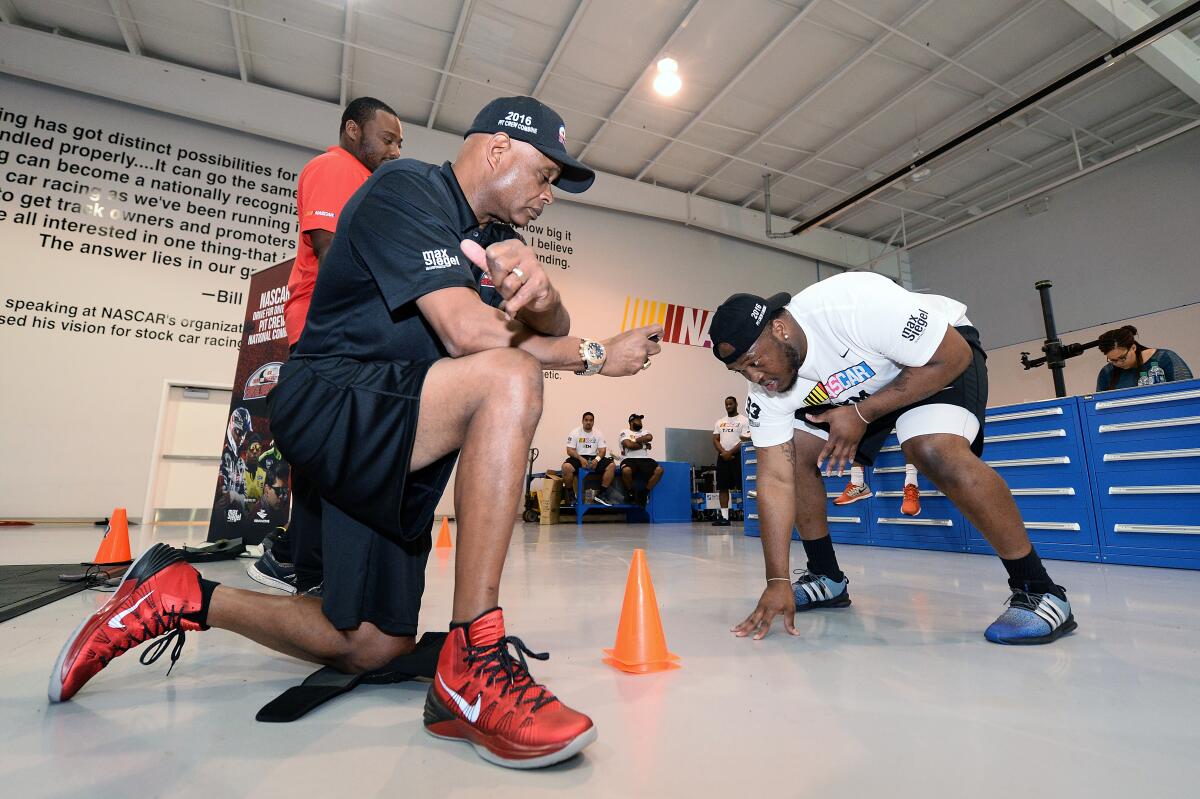
“So we’re not only looking at them being athletic, but being able to handle the pressure and perform under pressure. And that’s what athletes have been trained to do.”
Aric Almirola agrees. He began racing in NASCAR’s top Cup series in 2007, posting 91 top-10 finishes in 15 seasons, and he’s seen the way the sport has evolved, especially in the pits.
“All these teams have realized that these guys, they’re athletes,” he said. “We ask them to jump off the wall, go around the car, change the tires, come around change the other tires, put 18 gallons of gas in and oh, by the way, jack up that 3,400-pound stock car. And do that in nine seconds. Man, that takes an athlete. So you’ve seen a lot of these teams go out and recruits athletes from football or the NBA or major league baseball.”
Dion Williams, who starred as a linebacker at Wake Forest before having a cup of coffee with the NFL’s Minnesota Vikings, was one of the first to make the jump, joining NASCAR as a tire changer in 2005, a time when Confederate flags were more prominent than American ones at most tracks. But Williams, who is Black, endured, contributing to 16 Cup Series wins and, more important, helping change the sport.
Daniel Suárez is the only Mexican driver to win a NASCAR Cup Series race. NASCAR is determined he won’t be the last, doubling down on its push for diversity.
Since Williams retired in 2016, the Confederate flag has been banned from NASCAR facilities and Bubba Wallace, who is Black, and Daniel Suárez, a Mexican, became two of the sport’s top drivers. Michael Jordan is a team owner, as is the Cuban American rapper Pitbull, and more than a dozen of the athletes Horton recruited into the pits are women.
“I was welcomed with open arms when I first came into the sport,” said McCord, who is Black. “I can’t speak from that aspect of how it was before, but I know now that it’s very welcoming. It does feel good to see a lot of diversity.”
Horton does most of his scouting on college campuses, where he focuses on people like McCord — an athlete who was still in his prime and eager to compete, but had no outlet after finding little success in the NFL, the Canadian league and in arena football.
“I was at the point in my life where I wanted to know what the next step was,” said McCord, who had returned to the University of Miami to finish his degree when a NASCAR recruiter approached him.
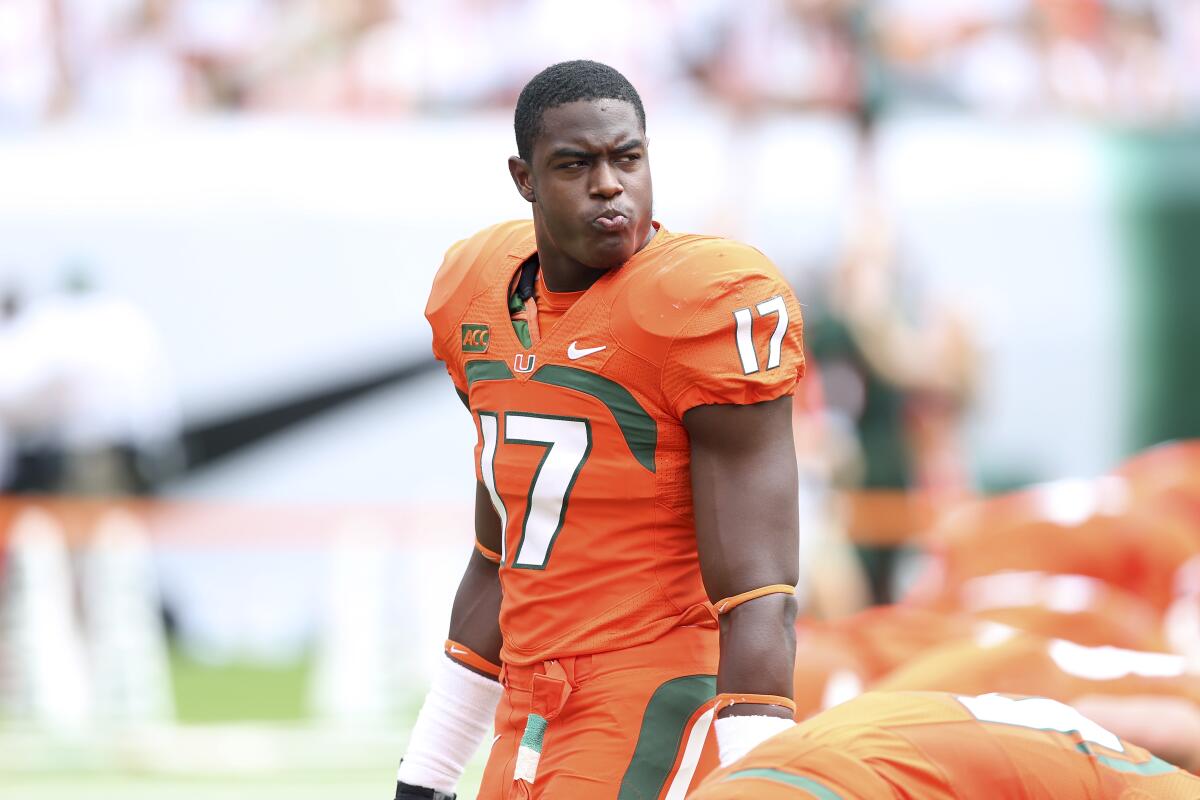
The conversation began with McCord admitting he knew little about cars but ended with the recruiter telling him he could make $100,000 on a NASCAR pit crew, with a chance to double that over time.
“That was a great eye-opener,” he said.
Horton said he prefers football players like McCord, not just for their athleticism and competitiveness but also because they’re fearless.
“In order to jump out in front of a 3,500-pound car you’ve got to put your body in harm’s way. And they’ve been trained to do that,” he said.
Or not.
“That is not normal,” said the 29-year-old McCord, who was initially frightened to go over the wall in front of a moving car.
But he had other skills. As a pass-rushing specialist with speed and upper-body strength, he was trained to stay low and take a direct route to the quarterback, similar to what he’s asked to do now as a jackman with RFK Racing, which fields two Cup Series teams.
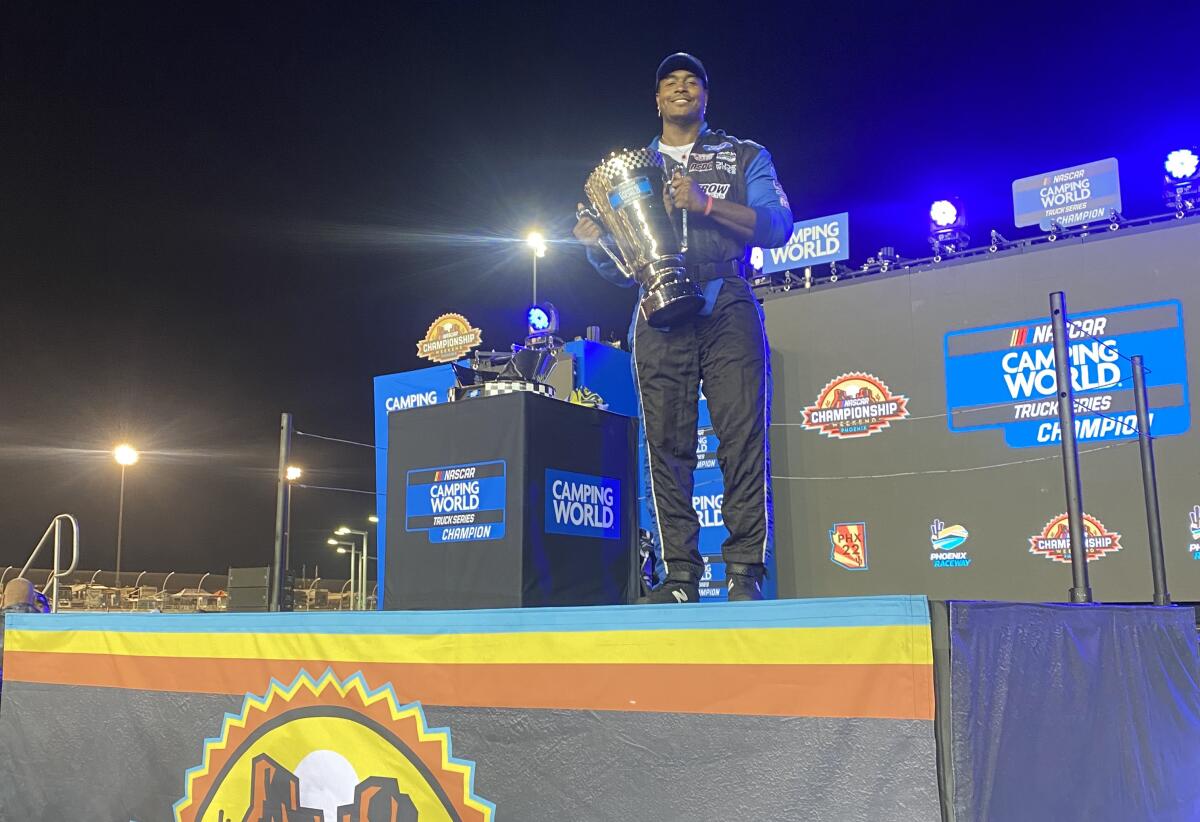
“I want to stay tight to the car,” he said. “When we’re done with the right side as far as putting on tires and everything, when I drop that car, I want to stay as tight as I can to attack the left side the same way as attacking a blocker.”
Horton also found Dalanda Ouendeno at Miami. A soccer player, Ouendeno grew up outside Paris and trained in the academy system of fame French club Paris St.-Germain before coming to the U.S., where she played at West Virginia and Miami. She knew she had little hope of playing beyond that but was a long way from wanting to retire.
“Since I was 5 years old, I played soccer. I’ve always been in a team, always competing every weekend. And when you’re done with college, there’s that gap where you try to figure out what you want to do,” said Ouendeno, 25, who is beginning her fourth season as a tire changer, perhaps the most exacting and pressure-packed job in a pit crew.
Horton said it takes two to three years to turn a soccer or football player into a top-level pit-crew worker, and that generally means working their way up through the ranks of the Truck and Xfinity series before joining a Cup crew.
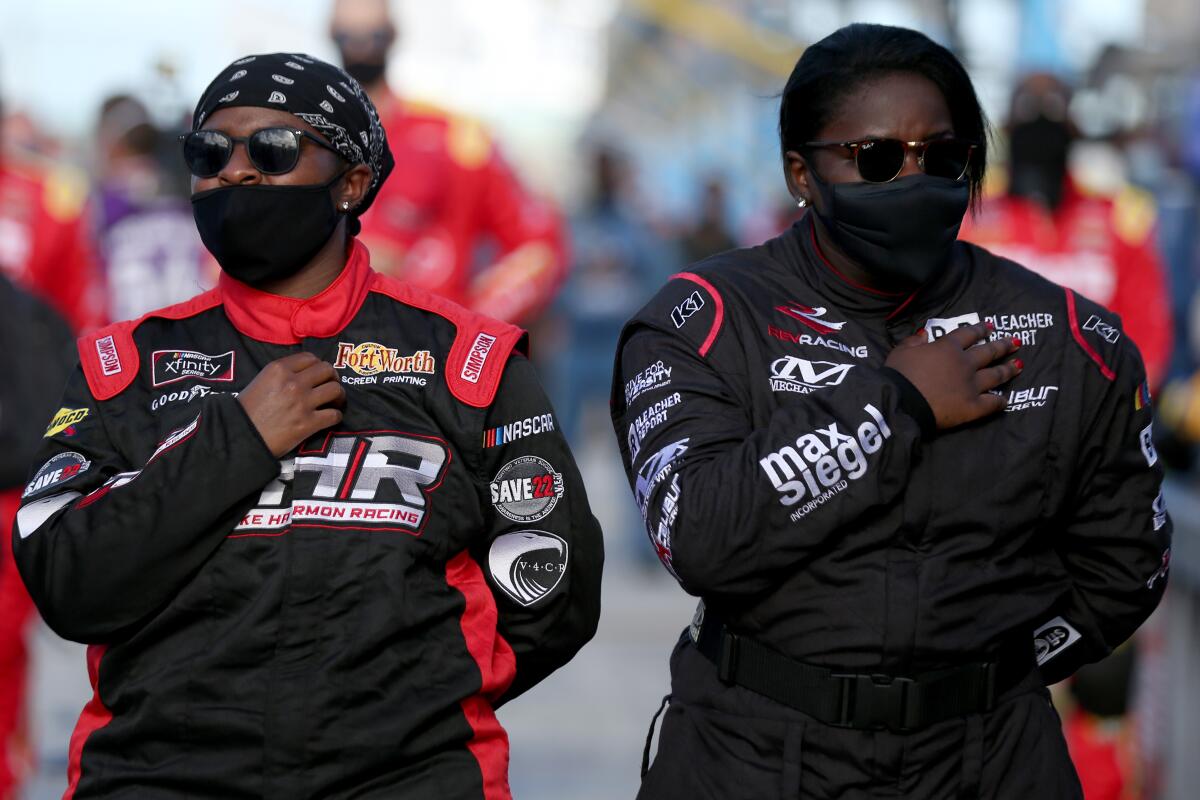
“There’s so much to learn, so much to get used to,” said Horton, whose proudest moment in racing was seeing his son Marcus, a high school football and basketball player, work on a NASCAR pit crew. “It’s like minor league baseball. They really have to go through that transformation.”
Like most recruits, Ouendeno knew little about NASCAR but was curious enough to give the sport a try, agreeing to attend the pit crew combine in North Carolina, where she proved a quick study.
“I figured it was a good way to extend my athletic career,” said Ouendeno, who works for Trackhouse Racing. “It’s mostly the competitiveness and the commitment you have to make every single day. You have to put in the work, you’ve got to show up every day. And when the pressure is on, you have to be able to perform in front of a lot of people. That’s the biggest similarity.”
And as with McCord, one of the first lessons was not to be afraid of the cars.
“It’s like doing a header and the soccer ball comes to your face and you’re trying not to dodge,” she said. “The more afraid you are, the more likely [something bad] is to happen. So now when I jump out in front of the car, I almost try to get hit because that will make me faster to get to that front tire.
Could the Clash at the Coliseum become a NASCAR Cup Series points race next year with the track at Fontana undergoing reconstruction? It is entertaining enough.
“It’s a habit. Once you do it over and over, you’re not scared anymore. It’s just the part of the job.”
Jeremy Kimbrough, who played linebacker at Appalachian State before spending parts of two seasons in the NFL with Washington, is a tire carrier who last year teamed with Jerick Newsome, a former college basketball player turned tire changer, to help Suárez become the first Mexican driver to win a race on NASCAR’s top series. He’s also worked for former Cup Series champion Kurt Busch, a level of success he never found in football and one that has proved more fulfilling.
“Football is obvious. You know one team or the other will win, so you always have a 50% chance,” said Kimbrough, whose job includes hauling two 48-pound tires over the wall during each pit stop. “But with racing it’s 39 other drivers out there. [Wins] are really a lot harder to come by.”
Kimbrough, 31, said there are other similarities to football. Pit crews practice for hours every weekday for a few minutes worth of work on the weekend and, as in football, film study makes up a big part of those training sessions. He also likes the camaraderie of being part on a team, something that’s easier to build in NASCAR.
“Football, it can kind of become cliquish,” he said. “But now with NASCAR, it’s only five guys so you really get to know your teammates. We spend the majority of our time together, from practice during the week to working at the track, doing a race and then flying back home. It’s been very important to establish relationship and friendships.”
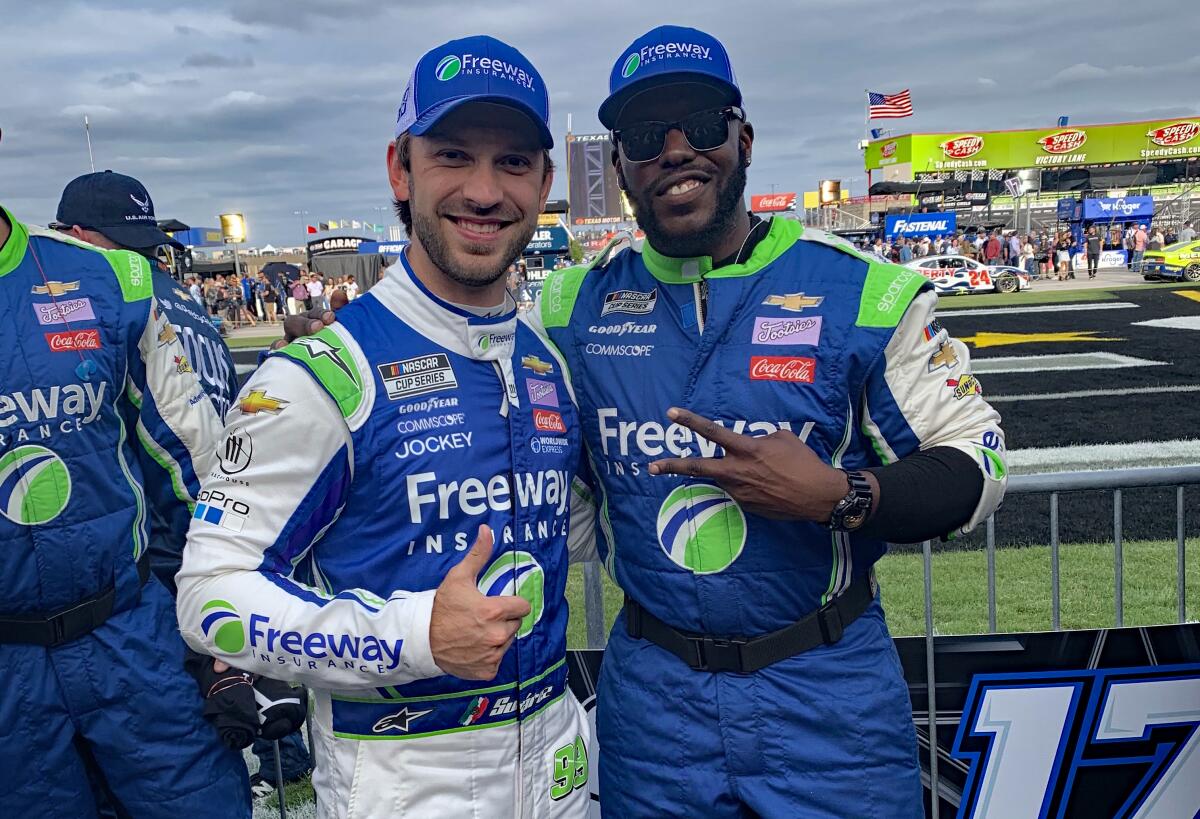
Kimbrough, who recently signed a three-year contract with Trackhouse Racing, says he think he can continue competing for another 10 years. If he does, his career in NASCAR will have been five times longer than the average career of an NFL linebacker. And with a lot less chance of concussion.
“From a physical standpoint, I can definitely go way into my 40s,” he said. “But the mental aspect of it, you kind of just kind of get worn out a little bit. The seasons are very long, 10 months, and just constantly being in that pressure and high intensity, you’re going to kind of just burn out.”
McCord would like to stick around too, although he admits after jacking up a NASCAR racer multiple times every weekend, he still can’t change the tires on his own car.
“To be honest, AAA can come out there and do anything for you,” he said. “I still don’t know how to change my own tires.
“I still have a lot to learn. I need to know where the carburetor is, man.”
More to Read
Go beyond the scoreboard
Get the latest on L.A.'s teams in the daily Sports Report newsletter.
You may occasionally receive promotional content from the Los Angeles Times.

